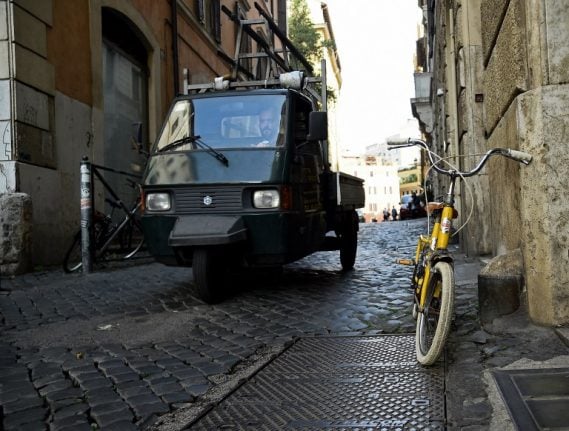They can be seen buzzing down (often the middle) of many an Italian country lane but these days are just as likely to make an appearance, restored, in the fanciest thoroughfares of major cities. Piaggio's iconic 3-wheeler, the Apecar, celebrates 70 years since the first models were released onto the market in 1947.
Enthusiasts disagree over the Ape's exact date of birth: prototypes were made available for sale in 1947 although the ape was only officially released in 1948. Diehard fans however have already started celebrating the vespa's cousins birth. The Italian Ape Club are due to meet in the northern city of Aosta for a series of celebrations next month.
The classic lightweight model, the 'Apetta', has a 50CC engine and only 2.5 horsepower, yet it can carry weights of up to 205 kilograms. A staple of post-war Italian agriculture, more than 2.5 million 3-wheel, 4-wheel and even 5-wheel models have been sold in Europe alone.
The original two models were sold for 170,000 lira. Some models however have become a rare find and a stamp of exclusivity: only a limited edition of 100 of the 2007 electric model 'Calessino' were produced, each starting at €22,000, according to La Repubblica.
READ MORE: Trump declares war on the Vespa
A version of the Ape is also produced in India since 2006 and is known as the Apé. Cheaper clones of the classic Piaggio 3-wheeler have also been designed by other companies, such as Tata in India.
Bee in the movies
The Ape has also starred in several high profile films since its inception, from classics such as Francesco Rosi's 1958 film The Challenge or The Passenger by Michelangelo Antonioni to – more recently – Cars 2, The Transporter and Grand Budapest Hotel. It also played a key role in the 1972 film The Italian Connection, said to be an inspiration behind Tarantino's Pulp Fiction.
Nine-times World MotoGP champion Valentino Rossi famously drove a vamped-up version as a teenager, his father Graziano describing it as “the most dangerous vehicle he (Valentino) ever drove.”
READ MORE: Valentino Rossi injured after motorbike accident



 Please whitelist us to continue reading.
Please whitelist us to continue reading.